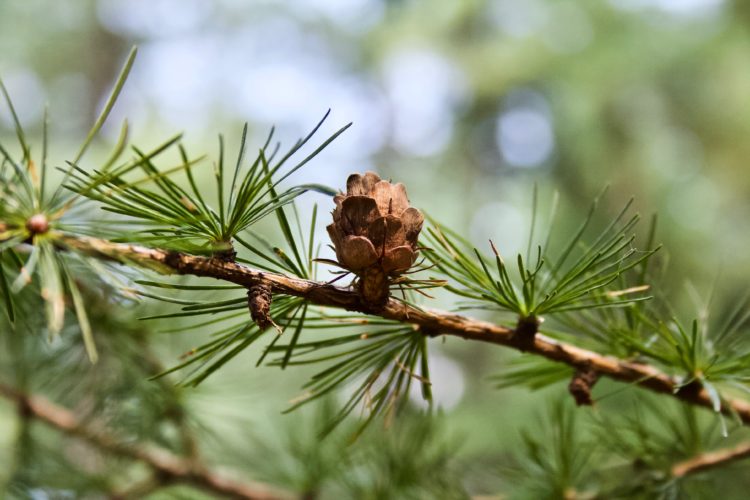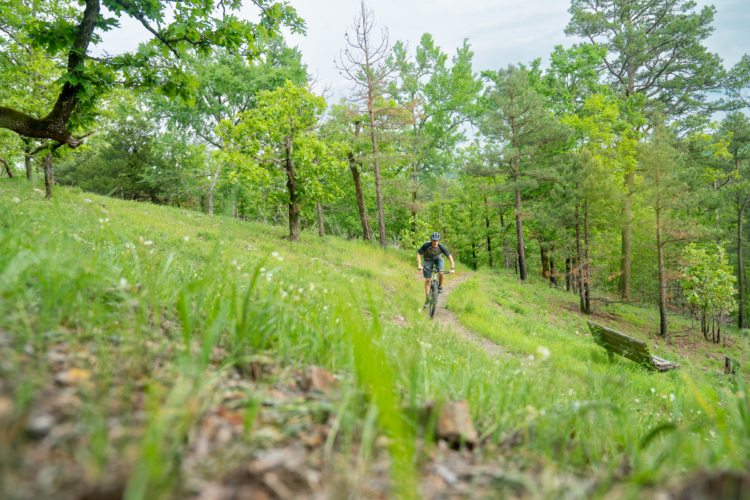
Which way to the beach? Rather, it’s spelled beech. In this look at what’s alongside the singletrack, we’re diving into one of Central Europe’s most common subalpine woody-plant species: the beech tree. In France and Germany, European beech (Fagus sylvatica) are the most common deciduous trees, making up roughly 15% of the countries’ forests. If you’ve ridden through almost any low to midland forest in Central Europe, you have likely rolled under an iconic stand of these silver trunked towers.

Naturally occurring beech trees grow in massive communities and their intertwined canopy of leaves leaves little light for mid and understory vegetation. While their foliage does fall away and regrow every season, the dead light-catchers hang from the branches of younger beech through much of the winter months, in a process called marcescence. This extended shade adds to the vacant forest floor beneath any stand and makes riding through a beech forest quite a magical experience. You can often see far further up the trail than might be possible in other forests, watching it slide and dip between the heavy pillars. Their monocrop habitat also litters the ground with a deep annual layer of crunchy leaf and nut detritus, creating the soundtrack to many a European mountain bike adventure.
Included in the thousands of miles of singletrack that maze through beech forests around the globe are the numerous iconic descents around Finale and Pietra Ligure, and the newer trail system on the Mallare side of the mountain. Rollercoaster rolls through a few shorter stands, and Ingenere alongside all of the tracks below Base NATO are lined almost exclusively by beech. The fast and loose goodness on the backside of the hill has all been freshly cut between Fagus sylvatica specimens, and if you haven’t had a taste of the Mallare tracks I highly recommend spending a full day over there.

There are between ten and thirteen species of beech trees depending on the classification authority, split between the two subgenera of Fagus and Endleriana. The Fagus engleriana subgenus is a rather rare tree growing only in central China, at elevations between 1,500 and 2,500 meters. The American beech (Fagus grandifolia) grows across the northeastern US and southeastern Canada, often sharing its space with sugar maple. Of the five east Asian beech species, Japanese beech (Fagus Japonica) is one of the most common hardwoods within its growing region.
European beech trees can be found at elevations between 150 and 1,500 meters, in a variety of soil types and across varying mountain slope grades. Like a lot of mountain bikers, beech trees prefer dryer soils and milder climates, and their growth patterns are negatively impacted by heavy precipitation and extreme temperatures.
How to identify a beech tree

The smooth bark of a beech tree looks similar to an elephant’s crevassed skin, and like the lumbering quadrupedal vegetarians, beech don’t reproduce every season. They grow and drop seeds every four years, making their edible fruits a poor identification marker. A specimen can live for 100 to 400 years, and reach heights between 15 and 150 feet, so their general size and shape are tricky indicators. As with most trees, the leaves and bark offer your best bet at identifying a beech.

The leaves are typically lighter green in the spring, turning to darker hues or a reddish-purple color in the case of a Copper beech. “Young leaves are lime green with silky hairs. As they mature they become darker green and lose their hairs. [The leaves] are 4–9cm long, stalked, oval and pointed at the tip, with a wavy edge.” The edges of beech leaves are not serrated like those of some similar looking species. Even when using a dichotomous tree-key, the leaves of a beech can sometimes be confused with a Basswood (lynden/lime tree), a cherry tree, an elm, Ironwood, or several other species. To be sure it’s a beech you can check for fruit and flowers, and remember to take a look at the bark.
A Beech leaf Noyau drink can be made by steeping the young spring leaves in gin.

The seeds of fruit of beech are eaten by hundreds of different animals and can be processed into a variety of delicious foods in your kitchen if you’re prepared to do the foraging. Beeches are monoicous, meaning they have both seeds and flowers on the same plant. They produce fuzzy brownish-orange seeds that are roughly the size of an almond every four years, and in the fall those seeds cover the forest floor along with their leaves. Once roasted, the seeds are reportedly as easy to extract from their shell as a sunflower seed.

The bark of a beech tree appears notably smooth and velvety, with lines and ridges that closely resemble the leg or trunk of an elephant. It grows thin and doesn’t heal well, and you can often see the stories of a single tree’s life in its bark. Beech around the world are subject to a bark disease that starts with an invasive insect boring holes in the thin skin. Those holes are then occupied by one of a few different species of fungi that further open them up, eventually killing the tree. Despite this disease, most beech species are listed as “stable” on the International Union for Conservation of Nature Red List.

Human and other animal uses
Indigenous peoples across North America have used beech trees for a wide variety of nutritional and medicinal purposes. “They have been ground into a powder to medicate headaches, epilepsy, hydrophobia, and vertigo. Beechnuts are mildly toxic, so they were chewed by the Cherokee to expel worms. It is the tannin content in beechnuts that gives them this toxicity, which is only a concern when consumed in large quantities. Other tribes including the Potawatomi, Algonquin, and Ojibwe ate beechnuts raw with no mentioned ill effects.The Iroquois crushed and boiled nuts into a drinkable liquid or powdered them and mixed them into bread, often with cornmeal and beans or berries. The Chippewa searched for caches of American Beech nuts hidden specifically by chipmunks since it saved them the work of both gathering and shucking the nuts. They also noticed that chipmunks never stored bad beechnuts, which is something to keep in mind should you find yourself in dire need of American Beech nuts.”
In addition to the edible and drinkable uses mentioned above, the hardwood from beech trees is commonly used to make furniture and flooring, parts of various musical instruments, to create the skeletal frame of boats, and as a source of long burning and abundant fire wood. Beech does, however, absorb moisture, and anything made from its lumber needs to be properly treated to avoid rot.
According to a site called Natural Medicinal Herbs, “The bark is antacid, antipyretic, antiseptic, antitussive, expectorant, odontalgic. A tar (or creosote), obtained by dry distillation of the branches, is stimulating and antiseptic. It is used internally as a stimulating expectorant and externally as an application to various skin diseases. The pure creosote has been used to give relief from toothache, but it should not be used without expert guidance.”
Hundreds of other animals live in on and around beech stands, and the nuts provide sustenance for black bear, badgers, deer, rodents, birds and countless other woodland species. While the tree is not a central source of nutrition for most animals, disease and decline in its northeast US habitat is affecting the food supply for some black bears.











2 Comments
Jul 9, 2020
I think the unit is wrong for the height. The article says they can reach 150 meters tall. Probably feet?
Jul 10, 2020